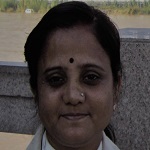
Title: Laminar mixed convection of permeable fluid sheeted over immiscible nanofluid
Keynote
Prof. J.C. Umavathi
Gulbarga University, India
Abstract
Double immiscible fluids has been drastically emerged in science and technology. In this research, combined convection of double immiscible fluids in a vertical square duct is investigated. One layer is natural fluid whilst the alternative is nanofluid. Both the layers are saturated with porous matrix having different permeability’s. The Tiwar-Das version and Dupuit-Forcchiemer is applied to outline the nanofluid and permeable fluid respectively. Southwell Over Relaxation approach is utilized to find the solutions of conservation equations along with suitable boundary and interface conditions. An interfacial stress andheat flux situations are hired on the intersection among immiscible liquid zones. Essential standards defining the fluid flow and transfer of energy are studied deliberately. Grashof number, Brankman number, Darcy number, inertial parameter, permeability ratio, solid volume fraction fraction, viscosity and thermal conductivity ratios, different nanoparticles, various base liquid of the two layer beverages are engaged. The effects reveal that the Grashof, Brinkman and Darcy numbers increase the momentum while inertial, solid volume fraction, viscosity and thermal conductivity ratios depletes the momentum. The temperature distributions aren't a lot modulated with any of the controlling parameters. By sagging nanoparticles the velocity is not much reformed however reckoning copper nanoparticle and applying ethylene glycol – mineral oil as base fluids regulates the best flow. Diamond nanoparticle dropped in water catalyses the best heat transfer rate.
Biography
Prof. J.C. Umavathi, Gulbarga University, India J.C. Umavathi completed her Post Doctral from the Department of Engineering, University of Sannio, Piazza Roma 21, 82100 Benevento, Italy. She is working as Professor in the Department of mathematics, Gulbarga University since 1993. She has published more than 230 research articles in reputed international journals. She is a recipient of Kalpana Chawla Young Scientist award, Sir J.C. Bose award and Erasmus Mundus Fellowship.
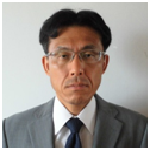
Title: Optimization of Operation Condition for Membrane Reactor to Produce Hydrogen from Biogas Dry Reforming
Keynote
Dr. Akira Nishimura
Mie University, Japan
Abstract
Biogas is usually available as a fuel in the gas engine or micro gas turbine to generate the power by energy conversion. Since biogas contains CO2 of approximately 40 vol%, the heating value is low compared to natural gas, resulting in a decrease in the efficiency of power generation. Therefore, this study adopts the biogas dry reforming process to produce H2, which can be used as s fuel for solid oxide fuel cell (SOFC). CO which is by-product from biogas dry reforming can be used as a fuel for SOFC. This study adopts the Ni as catalyst since Ni-based catalyst is the most common catalyst for biogas dry reforming process. This study also pays attention to a membrane reactor to improve the performance of biogas dry reforming. Since the biogas dry reforming is an endothermic reaction, it is expected that the performance of producing H2 is improved especially at lower temperature. Some studies investigated the membrane reactor for CH4 dry reforming. However, it can be said that the impact of operation condition such as pressure difference between reactor and sweep chamber, molar ratio of supplied gas and reaction temperature on the performance of biogas dry reforming has not been investigated well. Therefore, the purpose of this study is to optimize the operation condition such as pressure of sweep chamber, molar ratio of supplied gas and reaction temperature on the performance of biogas dry reforming. In the presentation, Dr. Akira Nishimura talks abuot the results and discussion of this study.
Biography
Dr. Akira Nishimura is an associate professor in Division of Mechanical Engineering at Mie University, Japan. He received the B.S. Eng., the M.S. Eng. and Dr. Eng. degrees in Chemical Engineering from Nagoya University, Japan in 1995, 1997 and 2000, respectively. He worked at Center for Integrated Research in Science and Engineering, Nagoya University as research associate from 2000 to 2002. He moved to Mie University in 2002 as an assistant professor and promoted to associate professor from 2014. He has published 88 journal papers which are reviewed. His current researches are H2 production from biogas, CO2 reduction by photocatalyst, and clarification on heat and mass transfer mechanism of polymer electrolyte fuel cell.

Title: Impact of Thermal Radiation and Chemical Reaction on Double Diffusive Magnetohydrodynamic Nanofluid Flow Between Parallel Plates: Exact Solutions
Keynote
Prof. Sharidan Shafie
Universiti Teknologi Malaysia
Abstract
Theoretical studies of free convection nanofluid flow between two parallel plates with mass diffusion are conducted. Copper nanoparticles are considered using water as a base fluid. One of the plates is oscillating. Thermal radiation, chemical equation, and magnetic effects on the fluid are investigated. The problem's governing equations are transformed into dimensionless equations and solved using the Laplace transform method. Analytical expressions for concentration, velocity, and temperature profiles are obtained. These solutions satisfy the governing equations as well as the initial and boundary conditions. All profiles, as well as the Sherwood number, Nusselt number, and skin friction influenced by important physical parameters, are graphically depicted. The effects of nanoparticles and oscillation are also studied and discussed.
Biography
Sharidan Shafie obtained his Ph.D. (2005) in Applied Mathematics from Universiti Teknologi Malaysia (UTM), Malaysia. He is working as an Associate Professor at Department of Mathematical Sciences, Faculty Sciences, UTM. He is member of Malaysian Mathematical Sciences Society (PERSAMA). His main areas of interest in research are fluid mechanics, heat and mass transfer, and mathematical modelling of boundary layer flow. Currently, more than 25 PhD and 10 MSc (Research) students have graduated under his supervision. More than 250 articles have been published, with 191 of them appearing in prestigious Web of Science journals. Mathematics Applied, Multidisciplinary Sciences, Physics Applied, Thermodynamics, Engineering Multidisciplinary, and Material Science Multidisciplinary are some of the areas of study.

Title: Implication of surfactants on flow characteristics and enhanced oil recovery in tight oil reservoirs
Keynote
Dr. Liu Xuefen
Longdong University, China
Abstract
The increasing world energy demand coupled with declining conventional oil production prompts toward an increased emphasis on tight oil. Water flooding is one of the important methods to improve tight oil recovery. Flow characters and the effect of surfactants in injection pressure and oil recovery were investigated. Flow during water flooding can be roughly divided into four stages according to the injection pressure and flow change. The injection pressure experienced stages of increasing to peak, then decreasing and finally becoming stable, accompanied by the increasing of oil production until water break through. Oil phase permeability decreases faster in samples with lower permeability. The contribution of oil recovery mainly happened at the early stage. The effect of interfacial tension reduction and wettability alteration by surfactant and its implication for oil recovery in tight oil reservoirs was analyzed. Gemini surfactant was more beneficial to reduce interfacial tension while Fluoride could make the wettability changed from original hydrophilic and oil-hydrophilic to neutral wetting (hydrophobic and oil-phobic). The average reduction rate of injection pressure by fluoride and Gemini surfactant was 32.4% and 14.2%, respectively. The improvement of recovery mainly occurred in primary water flooding, while the amount of oil displaced by surfactant solution and secondary water flooding was little or even no oil displacement. Changing rock wettability is more favorable than reducing the interfacial tension for oil recovery in tight sandstone oil reservoirs.
Biography
Liu Xuefen has completed her PhD from the Petroleum Engineering School, Southwest Petroleum University, Republic of China. She has been working as a Professor of College of Energy Engineering, Longdong University in Republic of China since 2011. She has published more than 30 papers in reputed journals and has been serving as the assistant dean of College of Engineering, Longdong University.
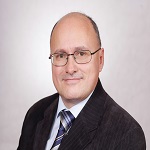
Title: Glued Laminated Timber
Keynote
Dr. Tomasz Krystofiak
Poznan University of Life Sciences, Poland
Abstract
In recent years, significant progress has been seen in adhesives for the manufacture of glued laminated timber. New generation of melamine-urea-formaldehyde (MUF), polyurethane (PUR), polyvinyl acetate modified with isocyanate (EPI) and resorcinol-phenol-formaldehyde (RPF) adhesives have been implemented on an industrial scale. These solutions make it possible to obtain joints in high water- and thermo-resistance. Implemented into industrial practice, MUF adhesives allow their use in the version of selective wet-on-wet application of components.
Properties of the wood species in aspects of the gluability has been presented. Advantages and disadvantages of the adhesives were showed.
Research has been carried out to determine the water-resistance and thermo-resistance of glue lines. On the basis of the obtained results the development of adhesives in aspects of the great application possibilities in the woodworking industry was showed.
Biography
Tomasz Krystofiak has completed his PhD from Poznan University of Life Sciences, Poland. He is the member of SWST /Society of Wood Science and Technology/ organization. He has published more than 150 papers in reputed journals or/and conference proceedings. He is an editorial board member or Guest Editor in Coatings, Energies, Forests and Materials Journals. Tomasz Krystofiak participated in COST Actions FP1006 (as Management Committee Substitute Member), FP1303 and FP1407 (Working Groups Member) and in CA15216 (Management Committee Member).

Title: Setting up Mathematical Models in Science, Quantum Relativity
Keynote Speaker
Dr. Glenn Tony Manuel Barrera
Barrera Science Lab, Sweden
Abstract
We present a general model for scientific theory. A general model handling not only one or two “forces” such as gravitation and electromagnetism can actually be constructed with a high functionality.
It is in this situation very important that Albert Einstein’s Theory of relativity for gravitation is included in the model. For example models for the strong force have been constructed on the
Theory of relativity. The theory of Relativity is based on the fact that controlled potentials is
Build up using the mathematical notion of curvature. However we can do better by mathematically rewrite these curvature potential function into trigonometric waves,sinesan cosines therefore constructing a wave theory of more than two forces. Quantum physics with electromagnetism allows mathematical functions analogue to Kepler Third Law this is equal to a sinusoidal relation found in Theory of relativity and therefore works also for the strong force. By using a what we called a “proper mass”, term from special relativity together with the General Relativity Schwartschild term
Biography
Dr. Tony Barrera is a certified autodidact math genius. He have published more than 39 papers In different subjects, scientific papers in computer graphics, numerical analysis, astrophysics Particle physics and mathematics. Tony does research together with profEwertBengtsson, Prof Anders Hast and Physicist Bo Thelin.
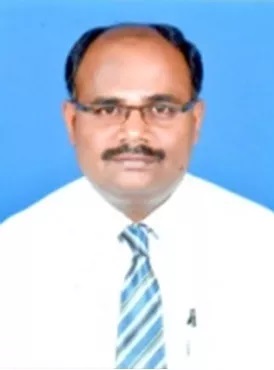
Title: Statistical Ethics of Research and Author level Metrics of Scholarly Impact Journals
Speaker
Dr. Basavarajaiah D.M
Karnataka Veterinary Animal and Fisheries Sciences University (B), India
Abstract
An any form of research that begins and ends with appropriate statistical techniques is regarded as falling within the umbrella of the fundamental science of statistics. On how we may embrace and use statistical approaches in the research and publication processes, the insight of statistical knowledge has been briefly examined from a number of viewpoints. Many scientists and researchers do not adhere to statistical ethics when conducting research, which undoubtedly has an impact on compilation and interpretation. The current work fills the aforementioned research gap by addressing statistical ethics and other research postulates. In addition to that, the academic journals have become more digital; writers now have more chances to increase the visibility of their research and its citations globally. The metrics is the gold standard. It is used to decide the ranking and benchmark of the journals which will be determined using bibolometrics and different algorithms. Numerous predatory journals lack of international standards and low quality. Authors will be unable to submit their research papers or reports to the journals for publication with a high impact factor in this circumstance. The main objective of this study is to focus on identifying the global citations by investigating the author level metrics of the top hundred scholarly publications. Data were gathered from Google Scholar source between January 2021 and September 2022 for the study, which was quantitative in nature. Hypothesis was tested by simulation growth model and statistically approximates the h5 citation and Journal impact factor. Asper the results, top hundred ranking was seen in Nature Reviews and Molecular Cell Biology (h5 155, IF 113.90 h5 median 340) followed by nature reviews immunology (h5 152, IF 108.60 h5 median 292), The highest ranking discipline that was substantially correlated with citation was health and medical sciences (r = 0.91, R2 % = 0.97) followed by physics and mathematics (r = 0.89, R2 % = 0.94). Finally, this study implies that open access will facilitate readers access to journal material as well as serve as a tool for publishers, scientists and researchers enabling them to make informed decisions at the appropriate moment and disseminate scientific knowledge. The global platform of researchers can benefit from the insight understanding that statistical ethics can offer.
Key words: Journal impact factor,h5 citation, indexing, author level metrics
Biography
Dr. Basavarajaiah D.M working as an Associate Professor and Head, Department of Statistics and Computer Science, Dairy Science College, Karnataka Veterinary Animal and Fisheries Sciences University (B), Hebbal, Bangalore. My area of research heeds Statistical theory, Statistical modelling on high dimensional datasets of Agriculture, Engineering, Medicine, Veterinary and animal Sciences. Penned sixty eight research articles and five academic books. Serving as an editorial Board Member and Scientific Board advisor of Various International indexed journals. Life Member of various academic organizations. Honoured several accolades for my academic and research Excellency “Chartered Scientist award stalwart by Science Council, United Kingdom in Collaboration with Royal Statistical Society. Best Reviewer award -2016 ‘TRANS STELLAR’ Journal Publications and Research Consultancy ,TJPRC Ltd., (NAAS rated Journals), Fellow of Royal Statistical Society ,UK (London), Fellow of Mathematical Society ,UK (London), Bharathshikshratana and Indo-Dubai Achiever’s Pacific award honoured by Global Society of health and educational growth new Delhi, Best reviewer -2015, Best scientific Board advisor - 2016 and Best editorial Board Member awards bestowed by International academy of Engineering Science and Technology (IASET),USA
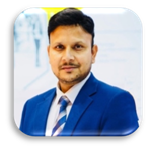
Title: Fingerprint Science: A Review on Historical And Contemporary Forensic Perspectives
Speaker
Prof. Bhoopesh Kumar Sharma
Shree Guru Gobind Singh Tricentenary University, Gurgaon, India
Abstract
The Forensic world has been using fingerprints as the standard for identifying people for more than a century.Even after the discovery of DNA Profiling, science of fingerprint is still considered as one of the best method for personal identification. The science of fingerprint recognition has advanced throughthe initial usage of finger-prints enormously and todaythe use of biometric data in national and international legal proceedings have surpassed other conventional methods of Forensic Science. Since decades, fingerprinting, dactylography, and dermatoglyphics had gained widespread acceptance and known as the answer to individualization, especially in forensic analysis. Individual fingerprints are intricate, one-of-a-kind, and challenging to fake. Their persistent over the period of time,uniqueness, makes them appropriate as permanent identity of Human beings. A fingerprint can easily be employed by any law enforcement or other agencies to locate those who want to hide their identities or in the case of a natural disaster, identify those who are handicapped or dead. This review discuss about the advancement in science of fingerprinting since it started till the current age of digitalization.
Biography
Prof. Bhoopesh Kumar Sharma is a Professor (Forensic Science) – Shree Guru Gobind Singh Tricentenary University, Gurgaon,(Haryana-India) – From September 2020 – March 2022. He is a dedicated and experienced professional in the area of Criminology, Forensic Sciences, Forensic Medicine, Crime Scene Investigation, Forensic Physical Sciences with over 16 years of experience in Teaching, Online Teaching, Academic Administration, Department Management, Department Establishment, International Collaborations (MoU’s), Curriculum Enhancement & Development, Innovation in Teaching, Research, Patent Filing, and project supervision to students.
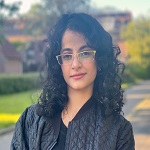
Title: Emotion Classification With The Brain-Computer Interface Using Neural Networks.
Speaker
Miss. Amat Hazbar
Sharesquare.co, Netherlands
Abstract
Brain-Computer Interface (BCI), Brain-Machine Interface (BMI), or simply neural interface,
is a hardware-software complex (HSC) for functional connections between biological objects
and machines. It is used to connect computers and other digital intelligent control systems
directly to the brain. Accurate classification of the data obtained from a human brain is a
critical aspect of the Brain-computer interfaces.
In this seminar, we will discuss BCI processes and emotion classification using BCI, Neural network algorithms such as multilayer perceptron, and the classification accuracy of an EEG-based emotion classification system.
Biography
Miss. Amat Hazbar holds a BA in Software engineering from the Computer Science department, University of Bahrain. Her research on Emotion classification using the Brain-computer interface and neural networks won second place in The Senior Project Exhibition of the IT college of the University of Bahrain 2022. Currently, Amat works as a Business analyst and a web developer at Sharesquare.co in the Netherlands.
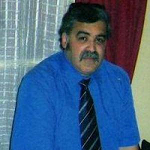
Title: Production of β-Type Nb–50 Ti-SWCNTs based Nanocomposites by FAST-SPS for Biomedical and Nanotechnology Applications (ITER)
Speaker
Prof. Bendjemil Badis
DGM-FST-University of GUELMA, Algeria
Abstract
The synthesize of β-type NbTi50/SWCNTs intermetallic matrix nanocomposite by mechanical alloying (MA) to ensurethe effective distribution of single walled carbon nanotubes (SWCNTs) within the matrix. It has been stated by severalresearchers that during MA of Nb and Ti powder mixtures, NbTi intermetallic compound formation occurs either
gradually along milling time, or suddenly through a mechanically self-propagating reaction (MSPR), which occurs aftera ignition time of MA. For this purpose 0.4 and 0.8 wt% of SWNTs were added to the powder mixture before thecompletion of reaction between Nb and Ti. The resultant powders NbTi50 intermetallic compound with and with a
addition of SWCNTs bulk samples were compacted and then sintered by field actived sintering technic spark plasmasintering method (FAST-SPS) at lower temperature in the range (1273 to 1473 K) with short time that retained theintegrity of SWNTs in the matrix. Structural and characteristics evolutions were investigated by X-ray diffractometery (XRD). field
emission scanning electron microscopy (FESEM) micrographs showed that the offered MA approach caused theSWNTs to uniformly embed in the in situ synthesized NbTi matrix. Meanwhile better distribution of SWCNTs resultedin higher density of FAST-SPS-FCT bulk nanocomposite as well as higher hardness up to 6.6 GPa compared to 6.41 of NbTi50intermetallic obtained from the same MA time. Fracture toughness showed more than 0.5% increase with bridging andpull out of SWNTs and deflection of cracks as toughening mechanisms.
The total porosity, compressive strength, and compressive elastic modulus of the FAST-SPS-FCT manufactured materialwere determined as 17%, 968 MPa, and 33 GPa, respectively. The alloy’s Yungs elastic modulus is comparable to thatof healthy cancellous bone, the in vitro biocomptability will be performed in the néar future).The comparable results for the FAST-SPS-FCT nanocomposites were 3%, 1400 MPa, and 77
GPa. The alloy’s elastic modulus is comparable to that of healthy cancellous bone. This difference in mechanicalproperties results from different porosity and phase composition of the bot β-phase NbTi50 andNbTi50/SWCNTs intermetallic matrix nanocomposite.
More otther nanotechnologies applications of the nanocomposite will be focused in the study of the superonducting type1 for the ITER Poloidal Field Coils by mesuaring of Jc(T, B) characteristics.
Keywords: β- NbTi50, SWCNTs, FAST-SPS-FCT, Microhardness, Fracture toughness, compressive strength, compressiveelastic modulus, Porosity archetucture, Cancellous bone, ITER Poloidal Field Coils
Biography
Prof. Bendjemil Badis, has got his PhD in solid states Physics (Surface-Interface-Spectroscopy) as PhD joint researcher between the LEREC Laboratory institute of physics, University of Badji-Mokhtar, Annaba, Algeria and, Leibniz-Institut für Festkörper- und Werkstoffforschung Dresden (IFF-IFW-Dresden), Germany (august 2001 – september 2004) (Deutscher Akademischer Austauschdienst (DAAD, STUPENDIUM) under the direction of the Pr. Martin KNUPFER and Pr. Jorg FINK (Dresden, Germany). Since 2004, I computed by FPLO 3 code from the Institut of theoritical physics of IFW-Dresden-Germany (Pr. Dr Manuel Richter and Pr. Dr Klaus Kopernick) (Dresden, Germany). and have unpdated the license by FPLO 18 in 2018 for calculation of the electronic structure of the solids and molecule more than 20 atoms, Fermi surface of the superconductor materials and dHvA magnetisation are also visualised and computed. And then to study the synthesis of metallic glasses in the form of massive and rubbans abd theirs nanocomposites by different processes (injection molding, arc melting and melt spinning at the UNITO with Pr. Marcello BARRICO and the INRIM laboratory (Melt spînning, Arc melting and injection molding apparatus in addition Microscopy, spectroscopy and magnetism like MFM, VSM and AFM technics) with Pr. Francko VINAI of Torino (Italy) and established a cooperation with the UNITO by a student mobility under my direction grant funded by the Torino Bank. In 2016 until 2010 at LPMIA, Henry Point Carré University Nancy (France) to study cold plasma physics processes (MWPACVD, RF and other plasma processes) for producing of carbon nanostructures by nanoform and initiated a collaboration in hot plasma (CADARACHE, ITER Project) : study of the confinement of the hot plasma physics particles interraction in elecoidal superconducting NbTi , ITER , Project, Plasma with the Pr. Jamal BOUGDIRA(Nancy, France). Since 2013 I have lernet to use Field Actived Sparck Plasma Sintering at the institute of Physics of new materials at Rostock university (GERMANY) with Pr. Eberhard BURKEL and Pr. Faming ZHANG (Rostock, Germany). and then i have develloped my experience in SPS and HIP at the laboratory of Pr. Giacomo GAO at Cagliari university of technology (Italy) and with the Pr. Frédéric BERNARD at the laboratory of (Procédés Métallurgiques, Durabilité, Matériaux) (Dijon, France). During that time he managed to publish a lot of publications and attend different International conferences in drug delivery and nanotechnology field in different countries using the functionnalisation of one dimensional molecular carbon nanostructure. Furthermore, he has got a postdoctoral research grant for one year, funded from the Algerian Ministry of Higher Education in ESIX, LUSAC, Cherbourg-Octeville, in collaboration with the Caen university (Basse Normandie) Bd, Maréchal Juin, France (august 2015 to September 2016) in Advanced Electroceramics and Nanocomposites with Pr. Jacques G. NOUDEM, Dr Mohamed MOUYANE and Pr. David HOUIVET . Prof. Badis BENDJEMIL upgraded to full Professor since April, 2010 to date. He has over 40 publications in peer reviewed journals with high impact factor as well as he attending a lot of international conferences all over the world.
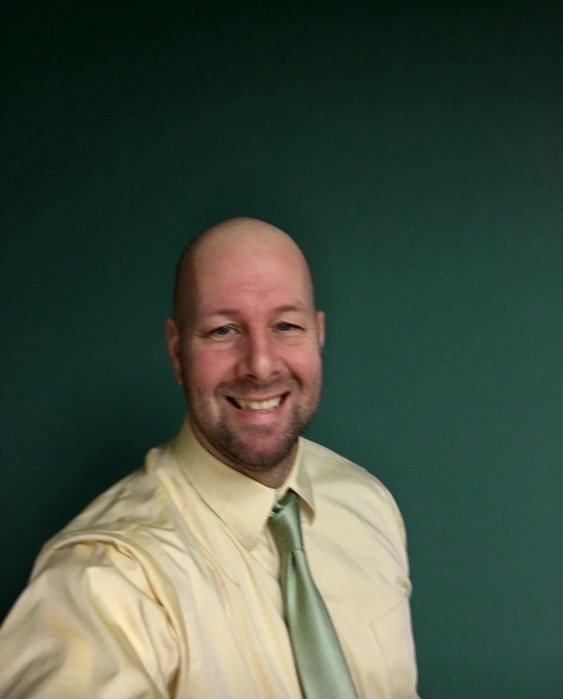
Title: Computer Science and Applications
Keynote
Prof. Jeffrey Seaman
Applied Computer Science, USA
Abstract
Computer Science andApplications is more than an App on the app store or play store.People are drawn to apps and the idea of coming up with that next big idea that will break the bank for them. When you introduce the word computer science, they don’t know the meaning, just that it’s an app, but what is an app.
Before thinking about creating a mobile application, website, etc; computer science needs to betaken back to the important principles that will get you to your destination. What is the motivation, why does the individual care about the problem and results, what is the problem statement, what problems need to be solved, what is the approach on how to solve the problem statement.
These are scenarios that need to be answeredbefore you can begin to write your source code and be that next rockstar of the app world. The discussion will be around what makes up computer science,how is it taught in the educationfield, the outcomesthat it provides
Biography
Prof Jeffrey Seaman have earned his undergrad degree from the University of Arizona in Computer Science, and graduate degrees from Robert Morris University in the same field of study. He didn’t start his education path off like most, He took some time off after my first year of college, and started to work in the industry as a Software Engineer with no formal education, and my knowledge was based on what he read in books and self-taught myself, as he worked in the industry. Five years later is when he had decided it was the right choice to go through and complete my education. In which at this time it was based on doing this with a family of five. Working full-time and attending school in the evenings full-time was not the easiest of methods, he learned more on how to manage multiple roles and responsibilities in a single period compared to what he would have learned not being in that situation. He have spent 23 years working in the Information Technology industry primarily as a Software Engineer, Architect, and in the management sector. He started teaching computer science as an Adjunct Professor at both Allegheny College in Pittsburgh, PA, and West Liberty University, in West Liberty, WV. Since 2018 he have been a full-time assistant professor of Applied Computer Science at Point Park University.

Title: Characterization, Control and Treatment of Urban Stormwater
Keynote
Prof. Mervat El-Hoz
Environmental Engineering Consulting, Australia
Abstract
Increases in urbanization lead to increased rainwater run-off and the spread of pollutants from urban watersheds. Understanding urban storm water is essential to the control and management of stormwater and its impact on the water system. Urbanization boosts runoff and the density of water and pollutants in local streams and downstream waters. This study included assessing the physical, chemical and bacteriological properties of urban rainwater. Moreover, the statistical analysis of the parameters tested were evaluated using the Pearson correlation method,the GIS program, and the relative impact of different types of land uses on rainwater quality was studied. Then, sustainable and effective control and treatments were provided in order to remove the runoff pollutants present in the study.
Biography
Prof. Mervat El-Hoz holds a Ph.D. from the University of Sydney in 1996, Australia, a BS in, and an MS from Middle East Technical University (1988 & 1989) in Turkey in Environmental Engineering. In higher education, she was the founder and chair of environmental engineering programs at the master's level (MSc in Environmental Engineering 2012-2020, MSc Minor Degree in Environmental Engineering 2000-2011) and founder and director of the Environmental Engineering and Water Quality Laboratories at the University of Balamand (2012-2020, 2000-2011) Lebanon. In consulting, Professor El-Hoz is the founder and CEO of the Environmental Engineering Consulting Office from 2002 to date. She has advised policymakers, communities, and companies on sustainable solutions to environmental issues since 1998. She is active in the Middle East and North Africa (MENA) regions. She worked as a project manager and local coordinator for several environmental projects and trained in water, sanitation, solid waste, and air quality workshops. Her academic and technical work is recognized internationally. She has published numerous research papers that scholars from all over the world have cited. She has received several awards in international conferences such as Solid Waste Management and Technology (USA and India); Environmental Science and Technology (USA). She was invited as a keynote speaker at many national and international conferences. She is a member of several editorial boards and scientific committees of major international journals and conferences and also serves as a reviewer for Elsevier journals. She is also an environmental expert for several policies and projects funded by the World Bank, USAID, the European Union, and the United Nations Development Program.
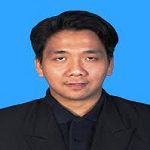
Title: Microplastic Coagulation by Using Natural Coagulant
Keynote
Dr. Ahmad Razi Bin Othman
Universiti Kebangsaan Malaysia, Malaysia
Abstract
Microplastics are solid plastic particles composed of a mixture of polymers and functional additives. Microplastics can form inadvertently from larger pieces of plastic, such as car tires or synthetic textiles. Once microplastics are dissolved from major plastic products, microplastics can move through wastewater and settle in ecosystems causing pollution. This will affect living organisms in the way they are consumed due to their small size. Accordingly, the coagulation process is one of the ways to treat wastewater so that it is safer to release to the environment. The most commonly used commercial coagulating agent is alum whose use has an impact on the environment. Therefore, this study focuses on the treatment of wastewater containing microplastics through coagulation process using natural coagulant extracted from soybean seeds. In this study, the performance of soy bean seed extract will be compared side by side with comercial coagulant (alum) to coagulate microplastics in wastewater sample and will be evaluated through Total Suspended Solid (TSS) measurment and Fourier Transform Infrared (FTIR) spectrum and. Results obtained from this analysis showed both caogulant (alum and soy seed extract) can coagulate microplastic from the wastewater. However, alum performance showed slightly better sedimentation based on the TSS value. Alum showed more than 90% of TSS removal. On the other hand, soy bean seed extract showed below than 70% TSS removal. Although alum showed better performance, access usage of alum can give negative impact to the environment. Thus, selection of natural coagulant to coagulate microplastics from wastewater is still relevant due to the green and sustainable characteristics showed by natural coagulant. Keywords: Pollution; Wastewater; Microplastics; Coagulation; Natural Coagulant
Biography
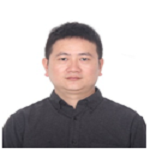
Title: Multiscale insights on enhancing the properties of recycled aggregate concrete by compression casting and nano materials
Keynote
Dr. Biao Hu
Shenzhen University, China
Abstract
Adopting recycled aggregate concrete (RAC)in the construction industry is an ideal approach to sustainability. However, the properties of RAC need modification before use in practice. Anew physical compression casting (CC) method was used in combination with the treatment of nanomaterials to enhance the properties of RAC. Although using nanomaterials contributed to accelerating hydration, promoting pozzolanic reaction, and increasing calcium-silicate hydrate gel, the enhancement in strength and reduction in porosity was found to be limited. Thus, the CC method was used to compensate for the weaknesses. The effects of CC, nanomaterials, and their combinations on the properties of RAC were investigated. At the macrolevel, the stress-strain responses were evaluated by examing the compressive strength, peak strain,and modulus of elasticity. At the microlevel, the porosity and pore distribution along the interface transition zones (ITZs) were investigated using mercury intrusion porosimetry (MIP) analysis and scanning electronic microscope (SEM) imaging technology. Significant improvements in both macro- and micro-level were reached by the combination using the CC method and nanomaterials.
Biography
Dr. Biao Hu is currently an Assistant Professor at the College of Civil and Transportation Engineering, Shenzhen University, P.R. China. He obtained his Ph.D. from the City University of Hong Kongin 2017. His main research focuses on composite materials & structures, structural retrofitting, and sustainable construction materials. He has published some40 technical papers in international journals and conference proceedings (including 32 SCI papers), and these worksreceived more than 690 citations recorded in Google Scholar. He is the principal investigator of 4 research projects and the co-investigator of more than 10 research projects. He serves as the editorial board member of several journals (Journal of Civil, Construction and Environmental Engineering,Building Technology Research and Construction Progress) and the guest editor of an SCI journal (Polymers). He is a regular reviewer of more than 30 peer-reviewed international SCI journals. He received the Moisseiff Award from the American Society of Civil Engineers (ASCE) in 2018.
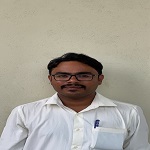
Title: Facile Synthesis of Nano structured CuO-ZnO hybrid Nano-composites as a cost effective, robust photo-catalyst for Direct Green and Fast Blue dyes and electro-chemical sensor application for highly toxic metal Arsenic
Speaker
Dr. Pratap Kumar
Scientific Officer, State Forensic Science Laboratory, India
Abstract
Pure CuO and 2-Dimensional CuO-ZnOnano-composites (NCs) were effectively prepared by an ultrasound-assisted probe sonication route for different ratios of CuO and ZnO, and the structural, photo-catalytic and electrochemical properties were investigated by the experimental and theoretical methods. The XRD (X-ray differation) patterns revealed a crystallite size (D) range of 25 to 31 nm for pure CuO and CuO-ZnO NCs. According to calculations, the sample’s optical energy band gap value (Eg) for the NCs is between 2.15 and 2.48eV. Under UV light irradiation, the photo-catalytic degradation of pure CuO and CuO-ZnO NCs on Direct Green (DG) and Fast Blue (FB) dyes was assessed. The electrochemical analysis of the prepared electrode with graphite powder in 0.1N HCl electrolyte solution demonstrated superior redox potential output as predicted by the cyclic voltammetry experiments. The NCs were employed for their sensing abilities for a highly toxic metal like Arsenic. Based on our study, we came to the conclusion that the CuO and ZnO NCs, containing 10% of ZnO, were the most effective photo-catalyst for DG and FB dyes and electrochemical sensor for Arsenic.
Biography
Dr. Pratap Kumar, Science & Arts Teacher, Scientist in Nano Science and Technology, WLEDs, Photoluminescence, Novel Photocatalysis, Preparation of Ultra Super Hydrophobic materials for day-to-day life, Textile designing and sustainable eco materials for packaging solutions, Scientific Officer in Criminal Justice with an Emphasis on Forensic Science at Firearms Section. Have 02 patents to the credit (Artistic mask to fight against Novel Corona Virus and Odor Masks designed for BBMP workers to fight coronavirus in a creative way) and 10+ patents (under process) have been filed and are in process of acceptance which reflects novel scientific temperament.

Title: Building the Remote Surveying System of Energy Consumption for the Maritime Transportation Industry Using Internet of Things (IoT)
Keynote
Dr. Tien Anh Tran
Marine Research Institute, Vietnam Maritime University, Vietnam
Abstract
The shipping transportation industry plays an important role in developing the economics at each country in the world. With the specific characteristics of maritime transportation, the energy consumption which is presented through the fuel oil consumption is very much. In when, the fuel oil consumption cost possesses mainly per total other operational costs. Besides that, the energy consumption related directly the environmental pollution issue from the ship operation process. In this research, the establishment of remote surveying system of fuel oil consumption has been conducted to help the stakeholders in the maritime transportation. The Internet of Things (IoT) technique has been employed to support this energy surveying system. The validation of this proposed system has been conducted for a certain vessel of shipping transportation company in Vietnam. These research results are very significant in monitoring the energy consumption for ships as well as the ship energy efficiency management.
Biography
Dr. Tien Anh Tran (IEEE Member, IMarEST Member) is working as an Assistant Professor (Lecturer) at Department of Marine Engineering, Vietnam Maritime University, Haiphong City, Vietnam. He is also a Honorary Professor at School of Computing Science and Engineering, Galgotias University, India. He received B.Eng and M.Sc at Vietnam Maritime University, Vietnam in 2011 and 2014, respectively. He got Ph.D. Degree at Wuhan University of Technology, Wuhan City, People’s Republic of China in 2018. He is an author/reviewer for the international journals indexed in SCI/SCIE, ESCI, EI. He is a Speaker for the international conferences in Australia, United Kingdom, Singapore, India, etc. He has served as an Editor for the reputation journals indexed in SCI/SCIE, ESCI, EI such as IEEE Internet of Things Magazine, Environment, Development and Sustainability (Springer Nature), IET Intelligent Transport System (Wiley), International Journal of Distributed Sensor Networks (SAGE), Sustainable Computing: Informatics and Systems (Elsevier), Frontiers in Artificial Intelligence (Frontiers), etc. He was received the NEPTUNE prize for the outstanding researcher of Vietnam Maritime University in 2019. He is one of five excellent scientists to be nominated the Ta Quang Buu Prize in 2022 by the Ministry of Science and Technology in Vietnam. He is an Member of the Institute of Electrical and Electronics Engineers (IEEE) (USA), a member of the Institute of Marine Engineering, Science and Technology (IMarEST) (UK). His main research interests include the marine engineering, control system engineering, optimization theories, maritime laws and policies, etc.
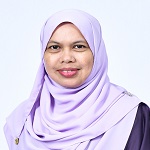
Title: DIGITAL TEXT STEGANOGRAPHY:CHALLENGES AND CURRENT RESEARCH
Keynote
Dr. Nur Izura Udzir
Universiti Putra Malaysia, Malaysia
Abstract
Digital text steganography uses embedding process to conceal messages in text medium to hide information in secret communications. The main goal of steganography is to have secret public information, the capacity or place to hide the secret information with a high perceptual transparency level, a robust steganography media against attacks by eavesdroppers, and protecting the shared secret key and the secret message during transmission. Therefore, the main challenge is to design an efficient steganography algorithm to achieve a secure communication. Moreover, there is the need to consider possible active attacks in order to have high security in steganography communication. This can be achieved via a hybrid steganography having other layers of information and sub disciplines such as cryptography. We will also discuss current research in text steganography, which mostly aim to provide an optimization solution, to increase the robustness of substitution techniques while maintaining the significant capacity of the embedded secret information. Techniques used in this research to achieve the steganography objectives range from machine learning, multilayer security mechanism, multifactor security, substitution, injection, and propagation techniques, encryption, to various embedding techniques. Modern steganography has made a huge impact on secret digital communication due to the widespread need to protect private and intellectual properties. Perceptibility against stego text is very important in steganography to avoid third parties detecting the existence of secret message to increase the level of secrecy. Moreover, the implementation of modern research steganography had broadened its benefits through applications in secret communication such as in gadgets like smartwatches with user-installable apps.
Biography
Dr. Nur Izura Udzir is an Associate Professor at the Faculty of Computer Science and Information Technology, Universiti Putra Malaysia since 1998. She received her PhD in Computer Science from the University of York, UK (2006). She has published a book, edited 3 books in information security, and over 220 articles. She has won the MIMOS Prestigious Award 2015and seven Best Paper Awards at international conferences. In 2014, 2019 and 2020 she has been invited as a visiting lecturer/foreign scientist at the M. Auzeov South Kazakhstan University, Kazakhstan. She supervised Dr. Nuur Alifah Roslan and Dr. Reema binThabit’s researchin steganography.
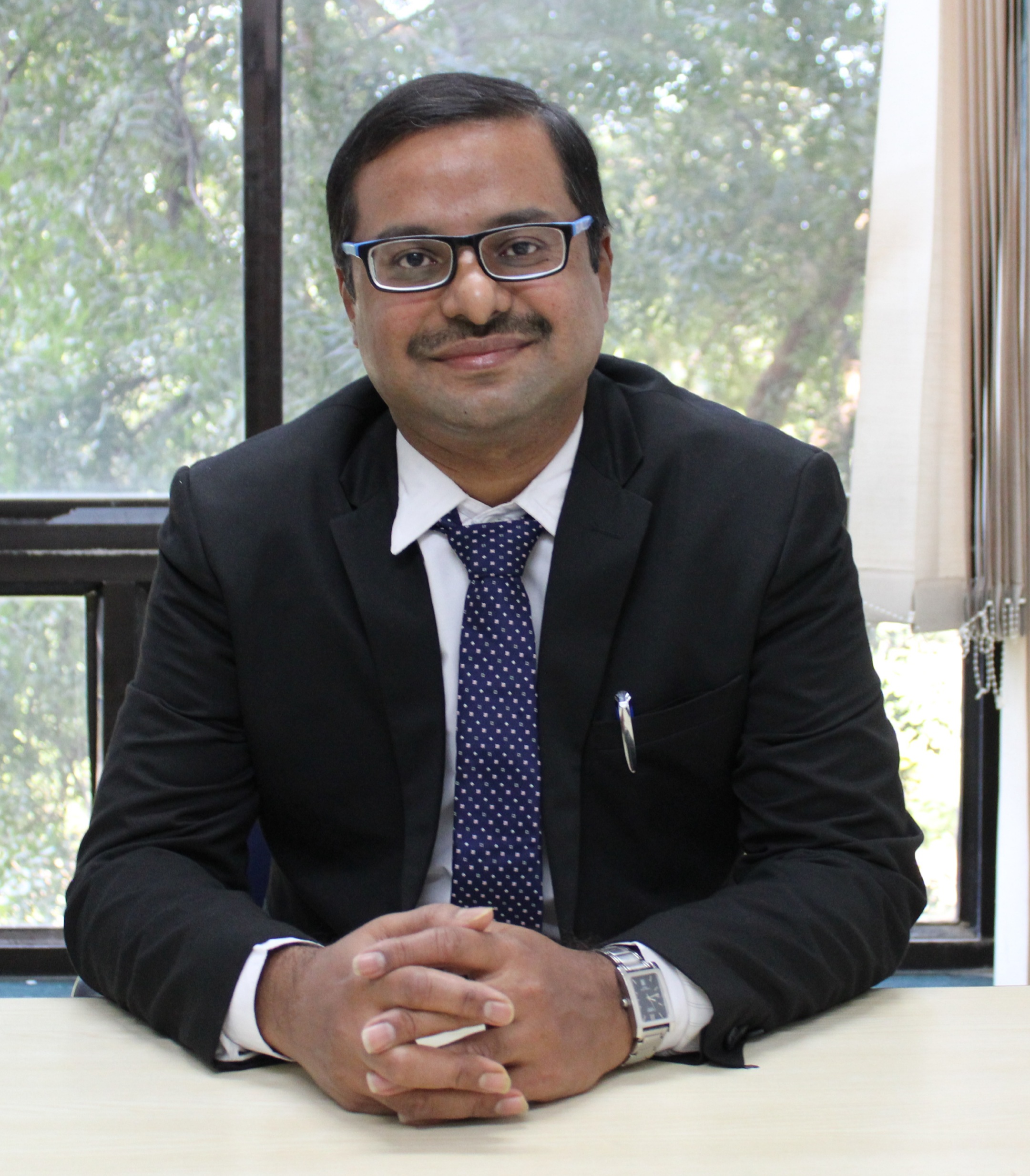
Title: Research Trends for Sustainable Smart Cities and Smart Villages
Keynote
Dr. Sailesh Suryanarayan Iyer
Rai University, India
Abstract
Smart Cities and Smart Villages are the need of the hour. There are tremendous challenges faced in creation and implementation of Sustainable Smart Cities and Smart Villages. Maintaining an equilibrium between use of technology and best practices for a healthy lifestyle forms the basis for sustainability solutions. My Keynote address would focus on Smart City and Smart Village requirements, Technological Innovation and Research Trends and Lifestyle sustainability solutions. Use Cases like Smart Healthcare, Smart Parking, Smart Education, Smart Manufacturing, Smart Agriculture and how technology like Artificial Intelligence, BlockChain, Internet of Things, Robotics and allied technology can bring about a 360o revolution in current scenario. The topic would also include Human angle with technology and Mindset changes required to build and operate Sustainable Smart Cities and Smart Villages.
Biography
Dr. Sailesh Iyer has a Ph.D. (Computer Science) and currently serving as a Professor with Rai University, Ahmedabad. He has more than 22 years of experience in Academics, Industry and Corporate Training out of which 18 years are in core Academics. A hardcore Academician and Administrator, he has excelled in Corporate Training, Delivered Expert Talk in various AICTE sponsored STTP’s, FDP, Reputed Universities, Government organized Workshops, Orientation and Refresher Courses organized by HRDC, Gujarat University. Research Contribution include reputed Publications, Track Chair at ICDLAIR 2020 (Springer Italy), icSoftComp 2020, IEMIS 2020 (Springer), ICRITO 2020 (IEEE) and TPC Member of various reputed International and National Conferences, Reviewer of International Journals like Multimedia Tools and Applications (Springer), International Journal of Big Data Analytics in Healthcare (IGI Global),Journal of Renewable Energy and Environment etc., Expert Talk on Research based topics in various Universities and Conferences in addition to guiding Research Scholars as Supervisor. He has also been invited as a Judge for various events, Examiner for Reputed Universities, is a Computer Society of India Lifetime Member and also serving as Managing Committee (MC) Member, CSI Ahmedabad Chapter since last 2 years. Research interest areas include Computer Vision and Image Processing, Cyber Security, Data Mining and Analytics, Artificial Intelligence, Machine Learning.
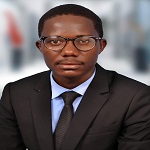
Title: E-Commerce: A Study on the Benefits and Challenges in an Emerging Economy a Case Study of Liberia
Speaker
Mr. Willie Bee Tingba, Jr
Digital Right Advocate, Liberia
Abstract
E-commerce is becoming progressivelyprevalent in the market today. Electronic commerce is the act of buying or selling of products or services electronically over the Internet (Wikipedia, 2021). E-commerce is the practice of marketing, identifying, paying for, and delivering products (books, computers etc.) and services (streaming videos, online games etc.) using the internet. Beyond purchasing and selling, many individuals use the Internet as a source of information to compare prices and view the latest products on offer before making a purchase either online or in a traditional store.
The African e-commerce market, and by extension, the Liberian e-commerce market is undergoing a growth phase. Despite the rapid growth, the profile is far below the actual potential compared to the e-commerce profile of other countries.
This paper looks deep into the benefits and challenges of e-commerce usage in Liberia and how it is impacting the Liberian economy, we have conducted a research to make analysis from a fact based perspective and we have used generally accepted tools to understand our data.
Malaysia, like the rest of the world, has embarked on national policy strategies and initiatives to develop its innovation led growth economy, and is placing a lot of importance on digital market. The Australian government, also, has also outlined certain strategic initiatives to tap on the positive force of the digital economy (Ida Madieha, Abdul Ghani Amzi&Jeong Chu Phuoc, 2020)
Biography
Mr. Willie Bee Tingba, Jr. is Liberia's leading youth advocate for digital rights. He grew up in the remote Liberian hamlet of Glehyee Zorpea, Yarwin Mehnsonnoh, Nimba County, Liberia, in West Africa. He is a Master's Degree candidate for Information Systems Engineering at the Cyprus International University. Willie holds a Bachelor of Science degree in Information Technology Infrastructure Management Services from the United Methodist University (UMU) in Liberia, an institution that brings light to the globe. He is an IT professional with extensive telecommunications, security, research, and network administration knowledge. He is also a CyberSecurity enthusiast who studies solutions for government and private-sector cyber-threats. Willie Bee the Founder and Emeritus President of the Liberia Information Technology Student Union, the country's foremost IT youth organization. He is a hired Training Coordinator for Africa’s leading technology solutions company based in Turkey, called M.IT.S Co. He is also a former Part-time Lecturer at the BlueCrest University College Liberia and former employee of the government of Liberia.
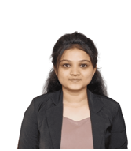
Title: Basics of Forensic Odontology
Speaker
Dr. Sankalpa N Navathar
Jain (Deemed-to-be University), India
Abstract
Forensic odontology is one of the branches of forensic science. It is defined as, “a branch of dentistry which deals with the proper handling and examination of dental evidence and with the proper evaluation and presentation of dental findings in the interest of the justice. Keiser- Nielson(1970)”. Father of Forensic Odontology is Dr.Oscar Amoedo.The subject can be roughly divided into 3 major fields of activity: civil or non-criminal, criminal and research. Historical events: long back in 45-70AD at Rome the dental finding was being used as a evidence first time in forensic manner where king Nero had killed his mother who was identified by 2 canine teeth. Similarly, in 1477, the body of Charles The Bold(last valois duke of Burgandy)was identified on the basis of several missing anterior teeth. Some high-profile cases like Ted Bundy and Adolf Hilter were also identified from bitemark and teeth.Scope and purpose of forensic odontology mainly focuses on identifying unknown human remains through comparison of postmortem dental evidence with dental records of the presumed deceased, age estimation of both living as well as dead, recognition and analysis of bitemarks found on victims or any other foodstuffs, determining the gender of unidentified person, identification of victims in mass disasters cases, presenting evidence in court as expert witness.
Biography
Dr. Sankalpa N Navathar has completed her B.D.S. from C.S.M.S.S. Dental College, Aurangabad, Maharashtra; PGD Forensic Science & Related Laws from Govt. Institute of Forensic Science, A’bad, Maharashtra; Fellowship in Forensic Odontology from Dr. D.Y.Patil School of Dentistry, Navi Mumbai, Maharashtra; M.Sc. Forensic Science (Forensic Biology & DNA Profiling) from Chandigarh University,Punjab;MBA (Hospital Administration & HealthCare Management) from Dr. D.Y.Patil Vidyapeeth, Pune. She is holding first class with distinction in her PGD Forensic Science & Related Laws, M.Sc. Forensic Science and MBA degrees. She has been trained at Central Forensic Science Laboratory, Pune in Forensic Biology and DNA division. She is holding 10+ certifications in field of forensic science. Her research interest mainly focuses on DNA, F. Odontology, F. Anthropology. Currently she is working as an Assistant Professor at the Dept. of Forensic Science JAIN (Deemed-to-be University), Bengaluru, Karnataka
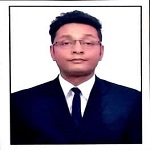
Title: Analysis of Criminal Fingerprints of 5 Indian States
Speaker
Mr. Abhishek Kumar Bisariya
Indian Industries Association, India
Abstract
Fingerprints in human Body is a individual characteristic used for identification of the person both in Criminal offences and identity. 5 Indian Sates- 1. Haryana 2. Madhya Pradesh 3. Bihar 4. Uttar Pradesh 5. Tamil Nadu have most data of criminal fingerprints in India recorded. Analysis done on the basis of quality, inking, code of conduct, chain of custody.
Biography
Mr. Abhishek Kumar Bisariya Masters in Forensic Science from National Forensic Sciences University , Ministry Of Home Affairs, Government Of India is an eminent personality known for his expertise in the forensic world. He has given various Forensic opinions in different criminal cases and assisted crime Scenes from Government Organizations. He is having vast training experiences from CFSL CBI, DFS Gandhinagar, CSB Ministry Of Textiles, Ahmedabad High Court, NCRB New Delhi etc. He is our founder continuously focus on giving tremendous services to his clients in private Sector and also participates in Social responsibility for providing free of cost services to the poor and needy people. Words from the Founder; “Forensic is a magical tool that helps judiciary in a scientific way for justice”About Founder Founder
“ Will be updated soon...”
+91 9491 456 452
Door No.200, Immidhihalli Main Road, Whitefield-560066, Bangalore, India
About Us
Global Scientific Guild organizes conferences and webinars to promote quality research and real world impact in an atmosphere of true international co-operation between scientists, doctors, professors, practitioners, engineers and industry by bringing together the world class renowned personalities to discuss the latest developments and innovations at one common platform.